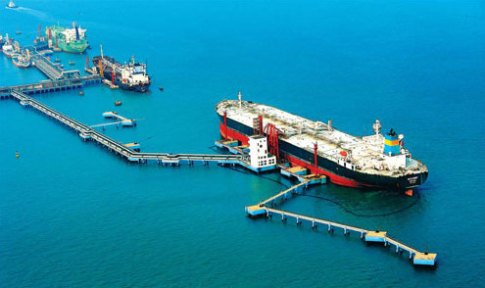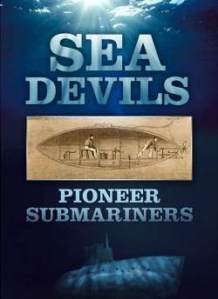Shipowners around the world have greatly benefited from China’s huge appetite for energy commodity imports, often involving long-distance voyages, over the past decade. Amid rapid expansion of economic activity and industrial output, China needed to supplement domestic energy resources with imported supplies, on an ever-increasing scale.
An optimistic view points to this strong upwards trend continuing. But how realistic is that prospect, in the light of accumulating signs indicating slowing economic growth in the years ahead? And what will be the impact of plans to enlarge the role of China-owned ships within these trades? 
Seaborne imports of coal, oil and gas into China, the main energy commodities received, are estimated to have reached about 620 million tonnes in 2013, based on calculations by Clarksons Research and Bulk Shipping Analysis. This massive total, comprising about 15 percent of all world seaborne trade in these categories, resulted from fast expansion in the past ten years. From about 130mt in 2003, the total almost doubled by 2008 and then more than doubled in the next five years. The annual increase last year apparently was about 9 percent.
Among the commodities, coal has been the star performer. China’s imports by sea of steam coal (used mainly in power stations but also in other industries) and coking coal (used in the steel industry) exceeded 300mt last year, growing from a small 10mt ten years earlier. Steam grades currently comprise roughly three-quarters of the coal volume. Seaborne imports of crude oil and oil products (refined oil) are almost as large, reaching over 290mt in 2013, more than doubling over the decade. Gas imports are much smaller, but growing quickly. The largest category of gas imported by sea – liquefied natural gas (LNG) – rose from nil a decade ago, to reach about 18mt last year. Imports of liquefied petroleum gas (LPG) total around 3-4mt annually.
A vast energy market
With a population of 1.35 billion people, the world’s most populous country, and a very rapidly growing and industrialising economy over many years, China’s demand for energy has risen enormously. Among the different contributors, coal is dominant, supplying about two-thirds. Oil is the second largest, at under one-fifth. The remainder is comprised of mainly hydro-power and natural gas, accompanied by nuclear power and renewable sources.
The largest portion of energy consumption consists of power stations generating electricity. These power plants are predominantly coal-fired, but alternative fuels used are gas and uranium (nuclear generation), supplemented by hydro-electricity. Generation from renewables, especially wind, is becoming much more significant. Several other industries also use steam coal. In the steel industry mills based on the blast furnace method producing pig iron, for conversion into steel, consume coking coal. The main contribution of oil is within the transport fuel market – road vehicles, aircraft and ships.
A large part of China’s market is supplied by domestic energy producers – coal mines, and oil and gas fields. Home production of the three fuels has increased over the past decade. But demand from consumers rose more rapidly than producers were able to raise their output. Rising imports trends resulted.
Coal is produced on a gigantic scale in China, the world’s largest producer (as well as consumer) of this energy source. Last year’s output was about 3.7 billion tonnes and although only slightly above the previous year’s figure, it was double that seen ten years earlier. The country’s remarkable economic development has been underpinned by coal, but resulting pollution has led the government to re-evaluate its contribution and to encourage use of alternative, cleaner, fuels.
Domestic crude oil production has also risen, reaching an estimated 213mt in 2013, about 25 percent higher than the volume seen a decade earlier. Most of China’s output is derived from mature fields where it has proved difficult to improve yields. Elsewhere, both onshore and offshore in coastal waters, extra oil production is evolving positively. Currently, the natural gas production sector is much smaller, although output has more than tripled in the past ten years, reaching an estimated 115 billion cubic metres in 2013. This upwards trend is being strengthened by the official policy to promote gas consumption. A small but growing contribution is obtained from shale gas deposits.
Adding to the positive impact on coal import demand, of a shortfall between the amount consumed and the amount produced, were more specific influences. Coal movements over long distances (from mines located mainly in the north, to consuming areas in the south or to the coast for onward transhipment) have been constrained by rail transport capacity and freight charges. Imports became even more competitive when international prices and the delivered cost (including ocean freight) was below domestic prices. Limited volumes, in domestic mines, of the high-grade coking coal used by the steel industry also boosted imports. Conversely, rising land movements from Mongolia were partially offsetting.
Huge imports of oil, gas and coal
China’s need to secure increasingly large volumes of the main energy commodities, from foreign suppliers, has been a great advantage for the global shipping industry. Employment opportunities for bulk carriers, tankers and gas carriers have mushroomed so much that, in all these trades, Chinese import demand is one of the principal influences and a major focus of attention for shipowners and operators.
A key question, therefore, arises. Will this favourable pattern persist, and to what extent, not only in the immediate future but further ahead? Given that, arguably, there are no other signs of growing import demand for these energy commodities around the world of a similar magnitude to that of China, the significance of the answer is crucial for shipping markets. What we can, perhaps, foresee is a somewhat mixed picture evolving, with strong positive elements.
Assumptions about China’s economic growth, and the pattern of its components, are a vital aspect. In both 2012 and 2013, gross domestic product (GDP) increased at a 7.7 percent annual rate, compared with an average 10 percent growth in the previous twelve years. An extended slowing trend is almost universally expected by forecasters, but opinions vary about the pace.
Prospects for seaborne oil imports are widely seen as promising. Consumption of oil in China is growing rapidly, especially in the transportation sector where surging road vehicle numbers are boosting demand for motor gasoline and diesel oil, a trend which is expected to continue. In a recent report Australia’s Bureau of Resources and Energy Economics (BREE) emphasised that increasing household incomes are likely to enable a rising proportion of Chinese families to purchase cars, substantially adding to fuel usage. However, a partial offset is envisaged: steps being taken to lower the economy’s energy-intensity by improving the efficiency of energy use, and also by encouraging consumption of alternative fuels.
Expansion of oil refining capacity, at coastal locations, is another clear sign pointing to strongly advancing seaborne crude oil imports. Further large capacity additions are scheduled during 2014, following last year’s increase. Moreover, China is implementing plans to substantially expand both strategic (state-owned) and commercial crude oil reserves, and new strategic inventory tankage is opening this year. But a proportion of the incremental quantities required will be derived from domestic production. And imports are not entirely delivered by ship: pipeline connections with adjacent countries Kazakhstan and Russia are alternative, land-based routes. Increased refinery capacity may both restrict imports of refined oil products and boost exports.
The outlook for seaborne imports of gas also seems bright. China’s natural gas consumption is set to grow vigorously, with added support from the government’s intention to encourage usage in preference to other hydrocarbons. As well as increasing domestic production, pipelines bringing gas from neighbouring countries, including the huge-capacity pipeline linking China with Myanmar which opened in 2013, will contribute large supplies. But nine LNG terminals at ports are already operating, and a further five are under construction, adding justification for expecting a strong upwards trend in seaborne imports, as emphasised in a recent report published by the US Energy Information Administration.
Overshadowing this view is shale gas. If China’s known gigantic reserves can be developed to ramp up production quickly on a colossal scale, then all other energy consumption and seaborne import predictions for fuels may be proved invalid. This scenario seems unlikely to happen in the near or medium-term future. Exploitation of shale gas is problematical in China. The geology is much more complicated than in the USA, where shale gas has been developed rapidly, requiring the drilling of many more wells. Expertise and equipment on the scale required for truly massive exploration and production could remain limited in China for some time, while the large water supplies also needed are not always available. Moreover, the essential pipeline connections for distributing the gas nationwide are not yet in place.
The prognostications for seaborne coal imports into China are more hazy. Some forecasts a few years ago indicated a strong expansionary trend continuing for many years. That view has proved correct so far, but there are now much greater uncertainties surrounding the outlook. The Chinese government’s intensifying emphasis on shifting energy consumption towards cleaner fuels is prominent, amid a slowing economy. This policy focus could reduce the large volumes (60mt in 2013) of low-grade, highly polluting lignite which is imported mainly from Indonesia. Also, an intention to make the economy’s capital investment spending and infrastructure-building a lower priority, implies that the heavy industry with high energy usage supplying materials such as steel will not be growing as quickly as seen in the past.
These prospective changes have implications for power stations, steel mills and other industries using coal. Although the balance of factors still, arguably, suggests that further growth in China’s seaborne coal import demand is a realistic idea for the years ahead as a trend, the pattern of annual progress may not be steady and could be subject to large variations.
Another feature of shipping demand related to energy commodity imports into China is the trade distances involved. Currently, large cargo volumes are seen on long-haul routes, but there are many examples of short-haul routes as well. Middle East countries together are the largest oil supplier, while Qatar alone supplies a high proportion of LNG imported. Seaborne crude oil imports from West Africa (especially Angola), Venezuela and Russia are prominent. Gas is imported also from Australia, Indonesia, Malaysia and other countries. Within the coal segment, Australia and Indonesia are the biggest suppliers, accompanied by Russia, Vietnam, South Africa and others. Any changes in these patterns affect tonne-miles and required shipping capacity.
Promising signs for shipping
This analysis suggests that the clearest indications of future growth, in China’s imports of energy commodities, during 2014 and probably for an extended period, are visible within the crude oil and LNG trades. These commodity purchases seem set to continue increasing strongly despite an envisaged slowing of the economy’s growth rate. There is some justification also for optimism about further coal imports expansion, but the reasoning is more tenuous, especially given the government’s focus on restraining industrial pollution as a means of improving the environment and air quality.
Finally, how much of this increased cargo volume will be carried by China-owned tonnage? Many additional bulk carriers, tankers and gas carriers are joining the fleets of shipowners based in China. Orders for newbuilding vessels listed by Clarksons Research, mostly scheduled for delivery by the end of 2016, amount to a large volume. Among these, Chinese shipowners at the beginning of March this year were awaiting delivery of 38 capesize bulk carriers totalling 8m dwt; 27 VLCC (very large crude carrier) tankers totalling 8.2m dwt; and 6 VLGCs (very large gas carriers) totalling 1m cubic metres capacity. Numerous other ships were on order.
The China-owned share of the global fleet participating in energy commodity import trades has been growing strongly, and seems set to continue enlarging. Nevertheless, shipowners of other nationalities probably will be carrying larger quantities of expanding trade volumes, even if their percentage share is diminishing.
Richard Scott
China Maritime Centre, GMI and MD, Bulk Shipping Analysis

